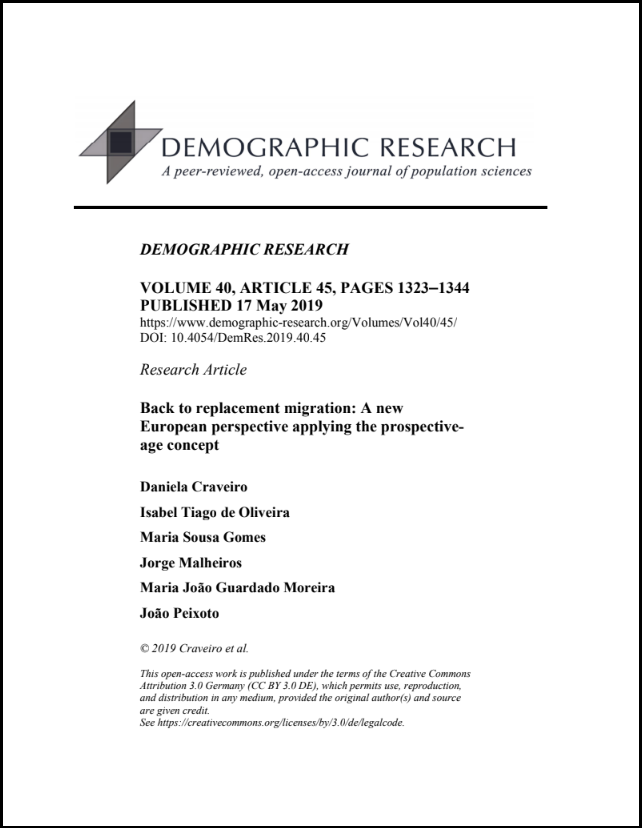 Título Back to replacement migration. A new European perspective applying the prospective-age concept
Título Back to replacement migration. A new European perspective applying the prospective-age concept
Autores Daniela Craveiro, Isabel Tiago de Oliveira, Maria Sousa Gomes, Jorge Malheiros, Maria João Guardado Moreira e João Peixoto
Revista Demographic Research
Data 2019
Palavras-chave Aging, Europe, migration, prospective age, replacement.
Artigo completo disponível, aqui.
Resumo
The UN Replacement Migration report (2000) had a significant impact in academic and civil society. Its approach consisted of estimating the migration volumes required to mitigate the effects of population decline and ageing. The volume of migrants required to prevent population decline and sustain the working-age population was not particularly high, but the vast number of migrants needed to maintain the potential support ratio was highlighted as an unrealistic goal.
In this paper the UN exercise is revisited and updated by deploying the concept of prospective age to overcome a strict chronological definition of the working-age population. The replacement migration approach is developed from a new European perspective, the temporal series is extended for an additional decade, and alternative operative age-group definitions are compared by projecting replacement migration estimations according to both classic (conventional) and dynamic (prospective) age limits.
The key conclusions of the original UN publication are reasserted. In many countries the replacement migration volumes needed to sustain the decline in total population and working-age population are of an order of magnitude similar to recent observed migration. However, even under the prospective-age approach the halt of the ageing process – expressed as the maintenance of the current potential support ratio – remains an unrealistic target.
We propose the deployment of the prospective-age concept to define dynamic age limits in the definition of working-age population. Because the prospective-age concept is flexible it will be possible to explore other dimensions from this perspective in the future, increasing the analytical potential of replacement migration estimations as a valuable contribution to the demographic ageing debate.






